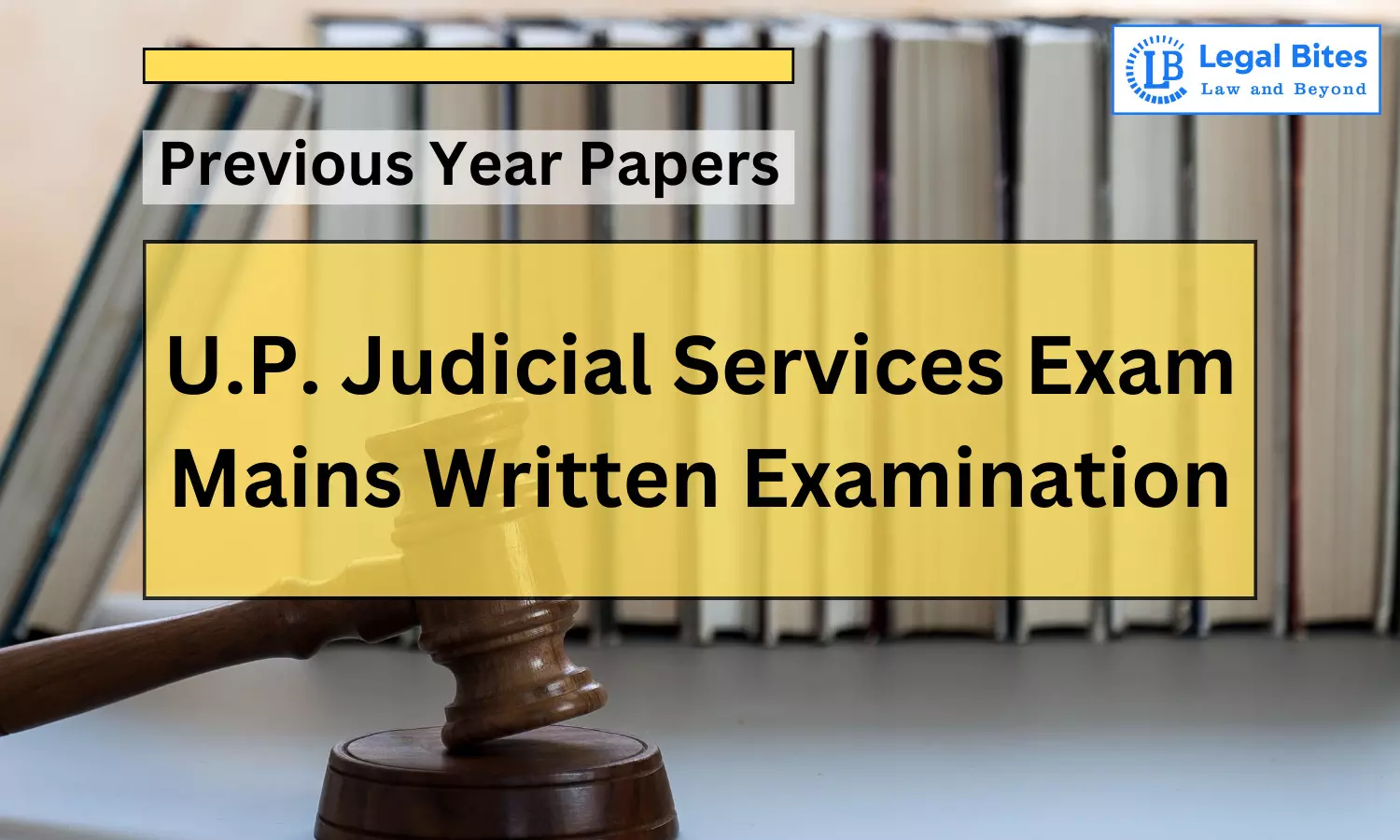U.P. Judicial Services Exam Mains 2015 Paper (General Knowledge) | UPJS Mains 2015 GK
Candidates preparing for U.P. Judicial Services Exam should solve the U.P. Judicial Services Exam Mains 2015 Paper (General Knowledge) and other previous year question papers before they face Prelims and Mains.

Candidates preparing for U.P. Judicial Services Exam should solve the U.P. Judicial Services Exam Mains 2015 Paper (General Knowledge) and other previous year question papers before they face Prelims and Mains. It also gives an idea about the syllabus and how to prepare the subjects by keeping the previous year's questions in mind. All toppers are mindful and cognizant of the types of questions asked by the UP PCS (J), to be aware of the various different tricks and types of questions. This should be done by every aspirant when starting their preparation. It is very important to have an overall understanding of the pattern and design of questions.
U.P. Judicial Services Exam Mains 2015 Paper (General Knowledge)
Only practising the authentic question papers will give you a real feel of the pattern and style of the questions. Here's U.P. Judicial Services Exam Mains 2015 Paper (General Knowledge). Practice and Prepare with our UPJS Mains Mock Test Series.
U.P. Judicial Services Main Written Examination 2015
(GENERAL KNOWLEDGE)
सामान्य ज्ञान
Time allowed: 3 hrs. Maximum Marks: 200
Question 1:
(a) Citing relevant Court cases, explain 'judicial activism' in India. (Word limit-150)
(b) Write explanatory notes on the following: (Word limit - 75 each)
(i) Rule of Law.
(ii) 'Doctrine of pleasure' for public servants.
Question 2:
Critically analyse the outcome of the visits of Prime Minister Narendra Modi to the following countries: (Word limit - 75 each)
(i) Sri Lanka (March 2015)
(ii) China (May 2015)
(iii) Bangladesh (June 2015)
(iv) UAE (August 2015)
Question 3:
(a) Mention the objectives of 'Make in India' campaign and critically discuss the progress of this campaign. (Word limit: 150)
(b) What has been the effect of the recent devaluation of Chinese Currency Yuan on Indian Economy? (Word limit: 75)
(c) Explain the difference between 'vote on account' and 'vote on credit'. (Word limit: 75)
Question 4:
Based on the figures of Census 2011, arrange the following in descending order:
(a) Chandigarh, Daman and Diu, Delhi, Puducherry and Lakshadweep Union Territories in accordance with population density.
(b) Goa, Himachal Pradesh, Kerala, Mizoram and Tripura States in accordance with literacy rate.
(c) Azamgarh, Ambedkar Nagar, Jaunpur, Mau and Pratapgarh districts of Uttar Prade in accordance with sex-ratio.
(d) Deoria, Sant Kabirnagar, Sant Ravidasnagar, Gautam Buddhanagar and Varanasi districts of Uttar Pradesh in accordance with population density.
Question 5:
Write notes on the following: (Word limit: 50 each)
(a) Pentavalent Vaccine
(b) Astrosat
(c) International Space Station (Alfa)
(d) Solar Impulse
(e) Withings Home
(f) Agni-V
(g) SAGA-220
(h) BT-Cotton
(i) Ebola Virus
(j) Cold Cloud
Question 6:
(a) What are the benefits that India will have by getting permanent membership of the United Nations Security Council, and what are the main obstacles in the way? (Word limit: 150)
(b) Why have the following been in the news? (Word limit: 50 each)
(1) Sunder Pichai
(2) Vijay Sheshadri
(3) Dr. A. Sivathanu Pillai
(4) Benny Tai-Yiuting
(5) Patrick Modiano
Question 7:
Write notes on the following: (Word limit: 75 each)
(i) Sagar Mala Project
(ii) Sir Creek
(iii) MAST (Telescope)
(iv) TAPI pipeline
Question 8:
(a) Analyse the statement: "Though Directive Principles and Fundamental Rights are complementary to each other, yet these differ in some aspects."(Word limit: 150)
(b) Write notes on the following: (Word limit: 75 each)
(i) Jahangir's interest in painting
(ii) Geographical position of Andaman and Nicobar
Question 9:
(a) Write explanatory notes on the following: (Word limit: 50 each)
(i) MUDRA Bank
(ii) NITI Aayog
(iii) Deficit Financing
(iv) Shadow Banking System
(v) India's National Solar Mission
(b) Write full form of the following abbreviations:
(i) HTTPS
(ii) ISO
(iii) OECD
(iv) IPCC
(v) AMRUT
Question 10:
(a) Give the location and importance of the following: (Word limit: 50 each)
(i) Eleventh rock edict of Ashoka
(ii) Buland Darwaza
(iii) Banawali
(iv) Sarnath
(v) Khusro Bagh
(b) What were the reactions of Jawaharlal Nehru and Muhammad Ali Jinnah on Government of India Act, of 1935? (Word limit: 75)
(c) Who are the authors of the following books?
(i) Tahqiq-i-Hind
(ii) Jai Somnath
(iii) Soz-e-Watan
(iv) The Man Who Divided India
(v) Emerging India: Economics, Politics & Reforms

